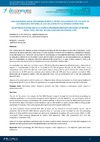Identificador persistente para citar o vincular este elemento:
https://accedacris.ulpgc.es/jspui/handle/10553/74380
| Campo DC | Valor | idioma |
|---|---|---|
| dc.contributor.author | Castro Núñez, Ulises Sebastián | en_US |
| dc.contributor.author | Peña Bordón, Aday | en_US |
| dc.date.accessioned | 2020-09-14T15:17:53Z | - |
| dc.date.available | 2020-09-14T15:17:53Z | - |
| dc.date.issued | 2020 | en_US |
| dc.identifier.issn | 1989-2837 | en_US |
| dc.identifier.other | Dialnet | - |
| dc.identifier.uri | https://accedacris.ulpgc.es/handle/10553/74380 | - |
| dc.description.abstract | Este trabajo tiene por objetivo analizar el programa olímpico de Río 2016 desde la lente de la Praxiología motriz, estudiando de forma específica y pertinente sus características en función de los objetivos y subobjetivos motores, el uso del espacio y la interacción motriz entre los participantes. La necesidad de desarrollar un estudio coherente ha obligado a diferenciar los resultados a partir de tres objetos de análisis: las disciplinas deportivas, los deportes (42); las modalidades, actividades deportivas discriminando el género y el peso, si fuera necesario (136); y, las prácticas, todas aquellas actividades deportivas en las que se obtiene medalla (306). Los resultados más relevantes nos indican que el 14% de las disciplinas deportivas (6) utilizan para su desarrollo un espacio no estandarizado; el 51% de las modalidades (74) del programa olímpico de Río 2016 tienen como subobjetivo motor prioritario efectuar superaciones espacio-temporales; y, que la interacción motriz entre los participantes es de 41% para las prácticas psicomotrices (126) y de 59% para las de carácter sociomotor (182), distribuidas de la siguiente manera: 34% de oposición (105), 12% de cooperación (37) y 14% de cooperación oposición (40). Algunas de las conclusiones más relevantes son: el objetivo motor efectuar traslaciones es el más representado en el programa de Rio 2016, con un 40%, y las prácticas con un espacio estandarizado representan el 90,1 % del total. | en_US |
| dc.description.abstract | The aim of this article is to analyze the Rio 2016 Olympic program through the lens of motor praxeology, by studying specifically its characteristics based on motor objectives and sub-objectives, the use of space, and the motor interaction among the participants. The need to elaborate a coherent study calls for differentiating the results based on three objects of analysis: sports disciplines, sports (42); modalities, sports activities differentiating gender and weight, if necessary (136); and practices, all those events which award medals (306). The most important results indicate that 14% of events (6) are realized in non-standardized spaces; 51% of modalities (74) of the Rio 2016 Olympic program have as a primary motor sub-objective that of overcoming distance or time; and that motor interaction among the participants comprises 41% psycho-motor (126) and 59% socio-motor (182) practices, distributed as follows: 34% opposition (105), 12% cooperation (37), and 14% cooperation / opposition (40). Some of the most significant conclusions are: the most common motor objective in the Rio 2016 program is to displace something; events with a standardized space represent 90,1% of the total. | en_US |
| dc.language | spa | en_US |
| dc.publisher | Asociación Científico Cultural en Actividad Física y Deporte (ACCAFIDE) | |
| dc.relation.ispartof | Acciónmotriz | en_US |
| dc.source | Acciónmotriz [ISSN 1989-2837], n. 25, p. 9-29 | en_US |
| dc.subject | 610701 Metodología | en_US |
| dc.subject | 6103 Asesoramiento y orientación | en_US |
| dc.subject.other | Praxiología motriz | en_US |
| dc.subject.other | Programa Olímpico Rio 2016 | en_US |
| dc.subject.other | Objetivo y subobjetivo motor | en_US |
| dc.subject.other | Espacio e interacción motriz | en_US |
| dc.subject.other | Motor praxeology | en_US |
| dc.subject.other | Rio 2016 OlympicProgram | en_US |
| dc.subject.other | Motor objective and sub-objective | en_US |
| dc.subject.other | Space and motor interaction | en_US |
| dc.title | Una aproximación al programa olímpico de Rio 2016 a través del estudio de los objetivos motores, el uso del espacio y la interacción motriz | en_US |
| dc.title.alternative | An approach to the Rio 2016 olympic program through the study of motor objectives, the use of space and motor interaction | en_US |
| dc.type | info:eu-repo/semantics/Article | en_US |
| dc.type | Article | en_US |
| dc.identifier.url | http://dialnet.unirioja.es/servlet/articulo?codigo=7538496 | - |
| dc.description.lastpage | 29 | en_US |
| dc.identifier.issue | 25 | - |
| dc.description.firstpage | 9 | en_US |
| dc.investigacion | Ciencias de la Salud | en_US |
| dc.type2 | Artículo | en_US |
| dc.contributor.authordialnetid | 1390283 | - |
| dc.contributor.authordialnetid | No ID | - |
| dc.identifier.dialnet | 7538496ARTREV | - |
| dc.utils.revision | Sí | en_US |
| dc.identifier.ulpgc | Sí | es |
| dc.description.dialnetimpact | 0,0 | |
| dc.description.dialnetq | Q3 | |
| dc.description.dialnetd | D6 | |
| dc.description.erihplus | ERIH PLUS | |
| item.fulltext | Con texto completo | - |
| item.grantfulltext | open | - |
| crisitem.author.dept | GIR Praxiología motriz, entrenamiento deportivo, didáctica de las actividades físicas y salud | - |
| crisitem.author.dept | Departamento de Educación Física | - |
| crisitem.author.orcid | 0000-0003-1860-0672 | - |
| crisitem.author.parentorg | Departamento de Educación Física | - |
| crisitem.author.fullName | Castro Núñez, Ulises Sebastián | - |
| Colección: | Artículos | |
Visitas
74
actualizado el 11-may-2024
Descargas
27
actualizado el 11-may-2024
Google ScholarTM
Verifica
Comparte
Exporta metadatos
Los elementos en ULPGC accedaCRIS están protegidos por derechos de autor con todos los derechos reservados, a menos que se indique lo contrario.
